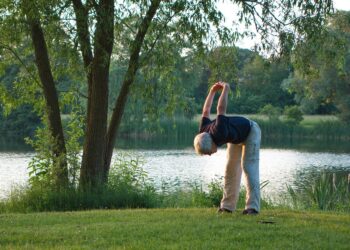
There’s a huge body of evidence that suggests exercising invigorates not only the body but also the mind. A new study, however, suggests that even very light physical activity such as housework can have a meaningful impact on a person’s mental health. According to the findings, even a couple minutes of light exertion per day was linked to larger brain volume, equivalent to approximately 1.1 years less brain aging.
Housekeeping, brainkeeping
Studies suggest that most adults lose about 0.2% of their brain’s volume every year after the age of 60, making them more vulnerable to dementia. According to recent research, physical activity can mitigate the risk of dementia, however, the specific activity levels for optimal dementia prevention are unclear. At the moment, US guidelines recommend 150 minutes of moderate to vigorous exercising per week — something which most older adults are unable to meet, primarily due to health issues.
Researchers at Boston University wanted to zoom in quantitatively on physical activity to see just how little physical activity is required for effects to show. They analyzed the data from the Framingham Heart Study, which involved 2,354 participants who used activity trackers. This allowed the researchers to assess the total steps walked per day by a participant, which was then associated with brain volumes determined by magnetic resonance imaging (MRI).
Those who took at least 10,000 steps a day had a 0.35% greater brain volume than those who took fewer than 5,000 steps a day, which is equivalent to preventing 1.75 years of brain aging. A little over half of the participants didn’t meet the recommended guidelines for physical activity. However, among this group people, incremental light physical activity was associated with higher brain volume — each additional hour of light-intensity physical activity was associated with approximately 1.1 years less brain aging.
That doesn’t mean that people who don’t break a sweat are safe. Moderate to vigorous exercising has been associated with longevity and a better quality of life in older age, and this is something that all people should strive for. It’s just that if your health doesn’t currently allow, every bit of exercising seems to help, even if the exertion is relatively light.
“Every additional hour of light-intensity PA was associated with higher brain volumes, even among individuals not meeting current PA guidelines. These data are consistent with the notion that the potential benefits of PA on brain aging may accrue at a lower, more achievable level of intensity or duration,” the researchers concluded.
Previously, researchers found that just half an hour of exercise is enough to promote neuroplasticity or the brain’s ability to reshape itself. Another study found that regular exercising reduces the risk of dementia by 40%.
The findings appeared in the journal Jama Network Open.






